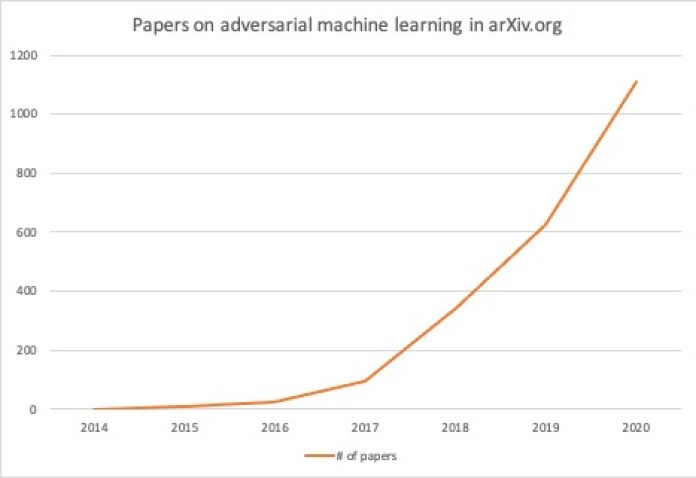The search for new antibiotics and other antimicrobials continues to be a pressing need in humanity's battle against bacterial infection. A new class of antibiotics, called immuno-antibiotics, may present the answer.
Scientists rom The Wistar Institute have developed a new class of dual-acting immuno-antibiotics. These drugs appear capable of blocking an essential pathway in bacteria and activate the human body's adaptive immune response.
The new research represents a double-pronged strategy. It is about developing new molecules that can eliminate difficult-to-treat bacterial infections while, at the same time, enhancing the natural host immune response to the infection. The rationale is that by harnessing the immune system to tackle bacterial infections from two different sides, this means that it becomes far harder to the organisms of concern to develop resistance.
The issue of resistance is an increasingly pressing one for humanity.
The problem of antimicrobial resistance
For the past 70 years, antimicrobial drugs, such as antibiotics, have been successfully used to treat patients with bacterial and infectious diseases. Over time, however, many infectious organisms have adapted to the drugs designed to kill them, making the products less effective. A growing number of disease-causing organisms (pathogens) are resistant to one or more antimicrobial drugs used for treatment.

E. coli magnified 10,000 times using an electron microscope.
Brian0918
Over the past several years, bacterial resistance has increased at an alarming rate. Antimicrobial resistance is a complex and multifaceted problem that is driven by many factors, including:
Bacterial population density in health care facilities, which allows transfer of bacteria within a community and enables resistance to emerge;
Inadequate adherence to proven hospital hygiene measures;
An increasing number of high risk populations, including chemotherapy, dialysis, and transplant patients as well as those in long-term care facilities;
Overuse of antibiotics in agriculture;
Global travel and trade, which can lead to transfer of resistant infections and resistance genes;
Poor sanitation in certain areas, which can contaminate water systems and spread resistant bacteria in sewage;
Inappropriate use of antibiotics in human medicine (e.g., for viral infections);
Overprescribing of broad-spectrum drugs, which can exert selective pressure on commensal bacteria and predispose to secondary infection; and
Lack of rapid diagnostics to help guide appropriate use of antibiotics.
The rise of multi-drug resistance
Of particular concern are multi-drug resistant organisms (MDROs). These are bacteria that are resistant to one or more of the antibiotics used to treat them. n MDROs can develop when antibiotics are not used appropriately. Factors that can contribute to the development of MDROs include taking antibiotics for the incorrect duration or using antibiotics when they are not needed (such as for viral infections).

Microbes: Staphylococcus is a common bacteria which can cause anything from a simple boil to horrible flesh-eating infections
Vano Shlamov, AFP/File
MDROs can cause a variety of infections in the body, including but not limited to:
Skin,
Lung,
Urinary Tract,
Bloodstream,
Wound,
MDROs can be spread from person to person through direct contact. Sometimes they can also be spread by sharing personal items, such as towels or razors. In the hospital, MDROs can spread through equipment that is contaminated or improperly reused. The mechanism of spread can depend on the type of organism.
The problems around drug development
Even as antimicrobial resistance has accelerated, antibiotic discovery and development efforts have declined, with many major pharmaceutical companies discontinuing their antibiotic development programs over the past decade.
This decline is due to a number of factors, including the low return on investment of antibacterials compared with other therapeutics, difficulty in identifying new compounds via traditional discovery methods, and regulatory requirements necessitating large and complex clinical trials for approval.

A laboratory technician works on coronavirus samples at "Fire Eye" laboratory in Wuhan
STR, STR, AFP
New research
In approaching the new development, researchers examined a metabolic pathway required by almost all bacteria but absent in humans. This made the pathway - methyl-D-erythritol phosphate - an ideal site. The pathway plays a role in the biosynthesis of isoprenoids; these are molecules required for bacterial cell survival.

This inoculated MacConkey agar culture plate cultivated colonial growth of Gram-negative, small rod-shaped and facultatively anaerobic Klebsiella pneumoniae bacteria.
CDC
The study targeted the IspH enzyme, which is necessary for isoprenoid biosynthesis. This proved to be the mechanism for blocking the methyl-D-erythritol phosphate pathway and hence killing pathogenic bacteria. What is of most interest about the pathway and the enzyme IspH is the fact that most bacteria require it in order to survive.
In order to identify the necessary drug active substance, the scientists deployed computer modeling in order to screen several million commercially available compounds. The focus was on finding a compound capable of binding to the enzyme. Those compounds found to be capable of inhibiting IspH function became the launch points for drug discovery.
Later studies showed the selected IspH inhibitors outperformed most established antibiotics in killing bacterial cells. Tests were conducted against several multidrug-resistant bacteria, including those from the genera Acinetobacter, Pseudomonas, Klebsiella, Enterobacter, Vibrio, Shigella, Salmonella, Yersinia, Mycobacterium and Bacillus.

A Bacillus species bacterium growing on a Petri-dish (from Tim Sandle's laboratory)
Tim Sandle
The compounds were also shown to be non-toxic to human cells, and thus providing the basis for the development of a safe medication.
Research paper
The new research has been published in the journal Nature. The research paper is titled "IspH inhibitors kill Gram-negative bacteria and mobilize immune clearance."
Essential Science
This article forms part of Digital Journal’s long-running Essential Science series, where new research items relating to wider science stories of interest are presented by Tim Sandle on a weekly basis.
Read more: http://www.digitaljournal.com/tech-and-science/science/essential-science-immuno-antibiotics-the-answer-to-resistance/article/583114#ixzz6hwzbrG4U



















